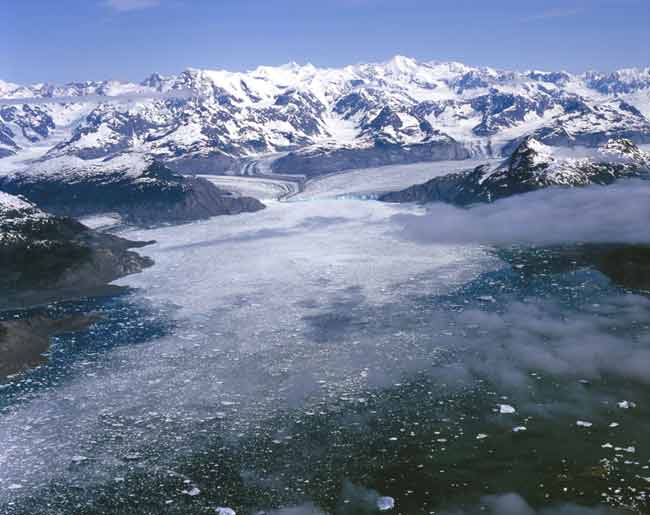Small Ice Sources Pose Big Threat to Rising Seas

Apparently, “don’t sweat the small stuff” doesn’t apply to sea-level rise due to global warming: Scientists have found that smaller glaciers and ice caps, not Earth's expansive polar ice sheets, could cause the majority of the rise due to melting by 2100.
The Antarctic ice sheet and Greenland ice sheet have held the focus of melt research, in part because of the enormous amount of ice they contain—Antarctica alone holds 90 percent of the Earth's ice and 70 percent of its fresh water.
"They do have so much more ice that if they were to disappear, it would be totally catastrophic for civilization today," said study team leader Mark Meier of the University of Colorado at Boulder. But, he added, "there is no way they could disappear quickly."
The ice sheets are more resistant because the thicker the ice, the longer it takes to melt. The massive, sometimes mile-thick ice sheets are well below freezing internally, and so it would take a long time for the extra heat from global warming to be conducted down into the center of the ice to melt the sheets, Meier explained.
However, other glaciers and ice caps in mountains can melt at a faster rate. They can also simply slip into the sea.
Snow vs. melt
As snow accumulates on the upper portions of a glacier, the ice thickens and begins to flow down. The rate of flow partly determines how fast the glacier melts.
Sign up for the Live Science daily newsletter now
Get the world’s most fascinating discoveries delivered straight to your inbox.
With rising temperatures, the surface of the glacier melts faster, and the water created percolates down through the ice, making the bed of the glacier more slippery and causing the ice to flow faster.
"Faster flow means more ice discharged to the ocean, which will then melt," Meier explained.
Glaciers high in mountain ranges such as the Alps also melt by flowing in this way, and their melt water runs into rivers and eventually into the ocean.
IPCC's missing info
Meier and his colleagues emphasized these types of losses in their study, detailed in the July 19 online issue of the journal Science, because considerations of flow rates were largely absent from the Intergovernmental Panel on Climate Change's (IPCC) estimates.
In its recent report, the IPCC estimated that the sea level rise (due to ice melt and the thermal expansion of ocean water) could be 7 to 23 inches by the end of the century, while Meier and his colleagues determined that the rise could actually be as much as 3.9 to 9.8 inches due to melt from glaciers and ice caps alone—roughly 60 percent of the total sea level rise due to melting ice.
The total estimated rise would be even higher when outlet glaciers from ice sheets and thermal expansion were included.
"We think they very much under-predicted the amount of ice loss to the ocean, especially from the glaciers and ice caps," Meier said. "We're predicting that the amount of ice melt will equal or perhaps even exceed the total sea level rise they are predicting."
- Top 10 Ways to Destroy the Earth
- Global Warming: How Do Scientists Know They're Not Wrong?
- Images: Glaciers Before and After

Andrea Thompson is an associate editor at Scientific American, where she covers sustainability, energy and the environment. Prior to that, she was a senior writer covering climate science at Climate Central and a reporter and editor at Live Science, where she primarily covered Earth science and the environment. She holds a graduate degree in science health and environmental reporting from New York University, as well as a bachelor of science and and masters of science in atmospheric chemistry from the Georgia Institute of Technology.









